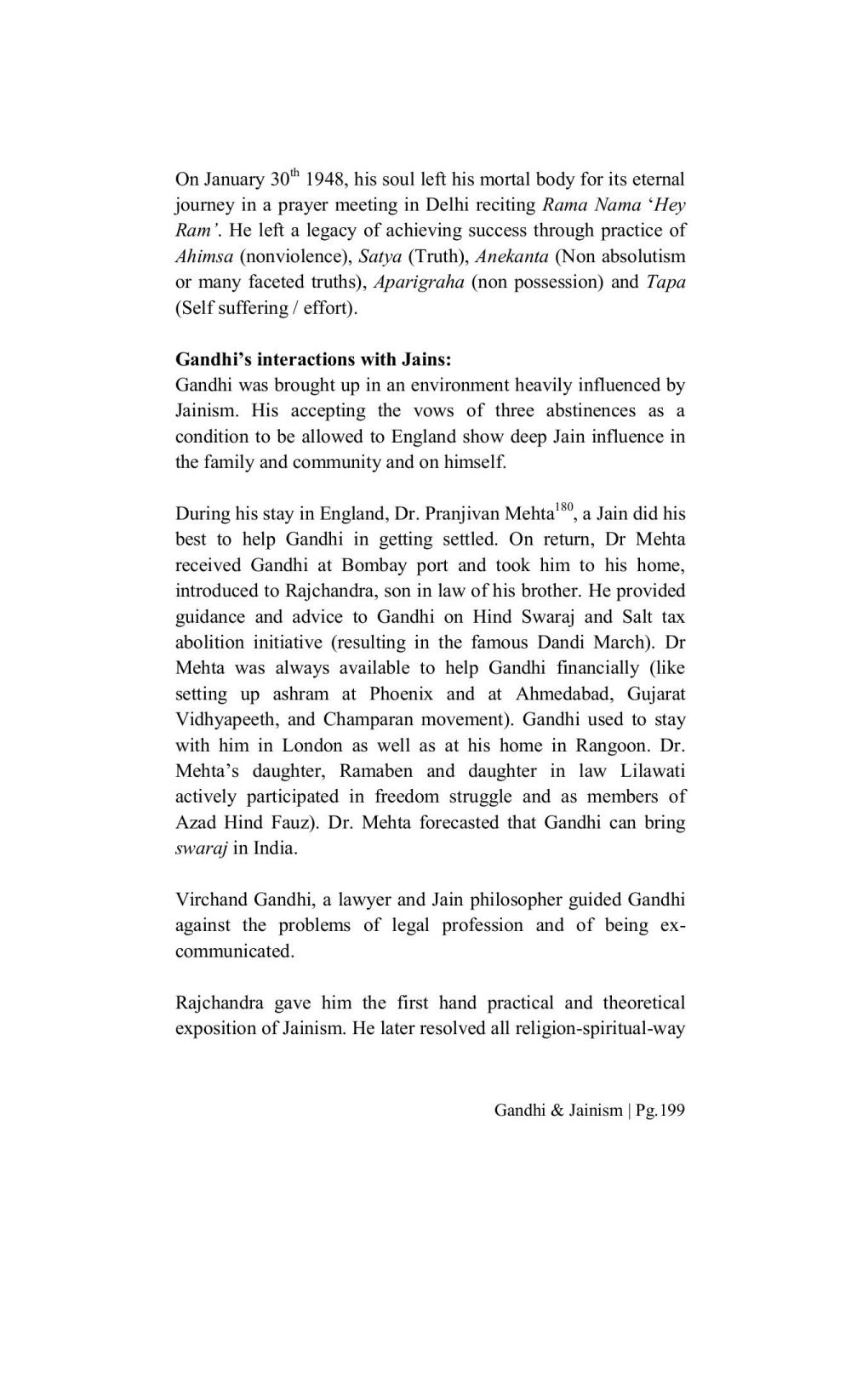________________
On January 30th 1948, his soul left his mortal body for its eternal journey in a prayer meeting in Delhi reciting Rama Nama 'Hey Ram'. He left a legacy of achieving success through practice of Ahimsa (nonviolence), Satya (Truth), Anekanta (Non absolutism or many faceted truths), Aparigraha (non possession) and Tapa (Self suffering/ effort).
Gandhi's interactions with Jains:
Gandhi was brought up in an environment heavily influenced by Jainism. His accepting the vows of three abstinences as a condition to be allowed to England show deep Jain influence in the family and community and on himself.
During his stay in England, Dr. Pranjivan Mehta180, , a Jain did his best to help Gandhi in getting settled. On return, Dr Mehta received Gandhi at Bombay port and took him to his home, introduced to Rajchandra, son in law of his brother. He provided guidance and advice to Gandhi on Hind Swaraj and Salt tax abolition initiative (resulting in the famous Dandi March). Dr Mehta was always available to help Gandhi financially (like setting up ashram at Phoenix and at Ahmedabad, Gujarat Vidhyapeeth, and Champaran movement). Gandhi used to stay with him in London as well as at his home in Rangoon. Dr. Mehta's daughter, Ramaben and daughter in law Lilawati actively participated in freedom struggle and as members of Azad Hind Fauz). Dr. Mehta forecasted that Gandhi can bring swaraj in India.
Virchand Gandhi, a lawyer and Jain philosopher guided Gandhi against the problems of legal profession and of being excommunicated.
Rajchandra gave him the first hand practical and theoretical exposition of Jainism. He later resolved all religion-spiritual-way
Gandhi & Jainism | Pg. 199




